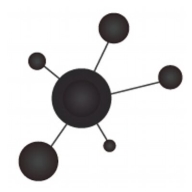

Cisco Nexus Dashboard Fabric Controller and Icinga both compete in the IT sector, each offering distinct advantages. Cisco stands out for its stability and integration, while Icinga is preferred for its open-source flexibility.
Features: Cisco Nexus Dashboard Fabric Controller delivers robust stability, excellent automation, and detailed network monitoring, simplifying connectivity management. Icinga's open-source platform ensures easy integration, substantial plugin support, and effective monitoring across numerous technologies.
Room for Improvement: Cisco Nexus Dashboard Fabric Controller could benefit from simpler tool integration, better reporting, and improved mixed architecture support, as well as addressing its complexity and cost. Icinga's opportunities lie in dashboard optimization, API enhancements, plugin improvement, and making user experience more intuitive and less resource-intensive.
Ease of Deployment and Customer Service: Cisco Nexus Dashboard Fabric Controller is usually deployed on-premises and in private clouds, offering strong technical support focused on development but needing enhanced operational support. Icinga, also deployed on-premises, lacks Cisco's robust support but benefits from a supportive community, reducing direct support needs.
Pricing and ROI: Cisco Nexus Dashboard Fabric Controller is a premium-priced solution, justified by comprehensive features and high ROI. Icinga provides a more cost-effective option through its open-source origins, offering substantial ROI through low initial costs, appealing to smaller organizations despite potential expenses for maintenance and customization.
| Product | Market Share (%) |
|---|---|
| Cisco Nexus Dashboard Fabric Controller (Formerly DCNM) | 0.6% |
| Icinga | 2.8% |
| Other | 96.6% |


| Company Size | Count |
|---|---|
| Small Business | 10 |
| Midsize Enterprise | 6 |
| Large Enterprise | 15 |
| Company Size | Count |
|---|---|
| Small Business | 9 |
| Midsize Enterprise | 4 |
| Large Enterprise | 7 |
The Cisco Nexus Dashboard Fabric Controller (NDFC) offers a comprehensive solution for managing Cisco NX-OS switches in hybrid-cloud environments, providing automation, visibility, and consistent operations. Designed to simplify and enhance data center management, NDFC integrates with Cisco Nexus Dashboard to streamline network connectivity, reduce deployment times, and ensure seamless transitions with minimal disruptions. Its modular architecture, new user interface, and support for non-Nexus OS platforms make it a robust tool for LAN, SAN, and IP Fabric for Media management. Additionally, NDFC enhances fabric reliability, automates workflows, and supports cloud connectivity with AWS and Microsoft Azure, making it ideal for businesses adapting to increasingly complex digital environments.
Icinga is a robust tool for monitoring IT infrastructure, known for its distributed monitoring capabilities and seamless integration with multiple platforms. It efficiently observes servers, network devices, and environments like Linux and Windows, enabling proactive issue identification and resource management.
With a focus on task delegation and clustering, Icinga offers an intuitive interface through its GUI and Icinga Director, simplifying configuration. The extensive plugin library supports diverse technologies, while the API allows automation with tools like Terraform and Ansible. Despite its strengths, users report challenges with data display in the GUI, a need for improved dashboards, and complex configuration processes. Users benefit from its SNMP alerts, email notifications, and automated incident handling, making it essential for managed service environments and enterprises.
What are the key features of Icinga?Icinga is widely adopted in IT environments for monitoring servers, networks, and applications across industries such as finance, healthcare, and technology. Its ability to integrate with various operating systems and automation platforms makes it a versatile choice for industries prioritizing comprehensive surveillance and proactive management of their infrastructure.
We monitor all Network Monitoring Software reviews to prevent fraudulent reviews and keep review quality high. We do not post reviews by company employees or direct competitors. We validate each review for authenticity via cross-reference with LinkedIn, and personal follow-up with the reviewer when necessary.